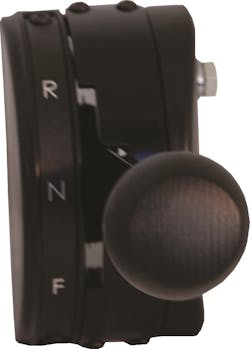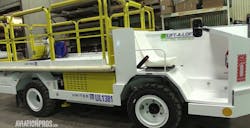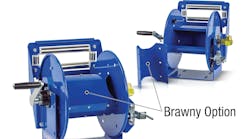Reducing Replacements with Proper Shift Control Maintenance
Shift controls are some of the most used and abused components in ground support equipment. Cycling through many times each day, the proper maintenance of these small but essential components can mean the difference between downtime and replacement parts and a longer lasting lifespan of your fleet.
A direct drive shift control connects to a cable, which has two main parts – the inner cable and the outer sheath. The inner cable will slide within the outer sheath. The inner cable will move depending on the gear that has been selected. The opposite end of the cable is connected to the transmission’s gear selector.
An electric shifter uses electrical signals to make or break contacts to communicate the desired gear.
Regardless of the type of shift control used on your ground support equipment, proper maintenance is essential to avoid unwanted expenses and challenges.
Wear and Tear
Shift levers in ground support equipment take a surprisingly rough beating.
Over time both the transmission and the shifter can begin to wear down, more so on direct drive cable shifters. If this wear and tear gets bad enough, the shifter may not indicate the proper gear anymore. Wear within the transmission may create ‘play,’ or dead band, that requires more movement from the shifter.
Shifters with switches, either rotational or linear, can also be affected by wear and tear. If the shift positions are altered by wear and tear in the shift lever or gate pattern, the switch may not adequately make the proper contacts, which will cause shifting issues. Very high cycling can cause the switches on shifters to malfunction.
Some import cable shifters don’t harden the shift levers. Over time a non-hardened shift lever, without any other type of wear protection, can dig in and create deep grooves across the shift lever. This can be dangerous as the shift lever can eventually break off and leave an exposed sharp edge.
A less common, but easily avoidable wear and tear issue that can occur is when the shift lever can bend if excessive load is placed on the lever, such as an employee using it as a support handle for climbing into the vehicle. The gate pattern can also become damaged, which would allow the shifter to come out of or into a gear easier. Over time, the shift lever and gate pattern can become so worn out that they need to be replaced.
Indicator Lights and Switches
Shift indicator lights can burn out, which can happen on a normal schedule after so many hours. Or it can occur because the shifter has experienced very rough conditions and rattled the light bulb enough to damage it.
Excessive Vibration
Excess vibration can wreak havoc on many intricate assemblies like electronic shift controls. The ground support industry is notoriously hard on items. A lot of the hardware within a shift is susceptible to loosening up.
In addition, excess vibration can also damage wire harnesses within and exiting the shifter. Over time, if a wire rubs on a hard edge, it can slowly remove the wire harness covering. When this happens often enough, the copper wires within the harness can become exposed and actually short out on the shifter or break.
Mounting Hardware
If the mounting bolts loosen up, the shifter may move slightly, which can place additional stress on some of the mounting tabs. It’s possible if the mounting hardware loosens up, it can break off some of the mounting tabs.
Proper Maintenance
A properly installed shift control should not have any issues for a long time. While there is no real set standard for when maintenance is needed, the user should do a visual inspection upon entering the vehicle to make sure it appears functional.
The shifter again should be visually inspected and shifted during regularly scheduled vehicle maintenance to make sure it is functioning properly. At this time, the harness should also be visually inspected to ensure nothing is wearing away the wire protection.
The most common maintenance needed, if any, will usually involve tightening hardware or replacing components. If components need to be replaced it is important to determine if the part is available and the lead time to determine the best course of action. If the issue is caught early enough, it’s possible to send the vehicle back into service while the new part is on order, as to not have any downtime.
Identifying early signs of the issues means you can usually rectify the problem before the component needs replacing. Loose hardware, worn gate patterns and shift levers can be easily caught if attention is paid to these small items. If they are not caught they can eventually lead to bigger issues and higher maintenance costs.
The benefits to a properly maintained shift control are numerous, all of which will contribute to longer life span of the equipment.





